Where to spend £1m on real estate – for investment or pleasure
Simply sign up to the Life & Arts myFT Digest -- delivered directly to your inbox.
A sum of £1m would today buy a three-bedroom bungalow in one of Sydney’s less fashionable suburbs, a grotto in Arizona, three beach huts in the village of Mudeford on England’s south coast, two vineyards in Bordeaux or 100 Versailles-style chicken coops. Yet, what would some of the FT’s writers do with £1m to spend on real estate?
…
Jonathan Ford, FT chief leader writer

I would spend the loot on lock-up garages. Some years ago, in a pub, I was introduced to a man called Harbottle (aka the “lock-up king of south London”) who explained the merits of these often overlooked property investments. From what I can remember, the key points were these: no stamp duty to pay; almost no responsibilities as a landlord; simple tenancy agreements; and the clincher – 10 per cent yield.
As the Stella Artois worked its magic, the beauty of these humble 6x3-metre structures swam gently into focus. According to Harbottle, the only snag was if you rented one to the Krays and they filled it with the proceeds of their latest bank heist.
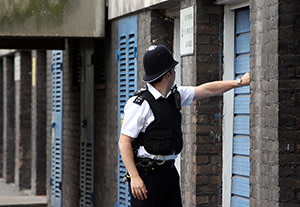
But even here there was a silver lining: the Krays would probably pay the rent on time. And you could always limit your legal exposure by specifying “no stolen goods” in the rental agreement.
The very best thing about lock-ups, of course, is that you don’t need to worry about postcodes, schools and all that stuff. A double-digit yield is the same wherever you collect it, whether in Kensington, Peebles, or Dungeness.
So here’s the thing: I am going to use my £1m to help rebalance the property market. I’m going to spend it outside the M25.
…

Izabella Kaminska, FT Alphaville reporter
A vineyard in Moldova, a block of flats in an upcoming Georgian ski resort, or a prime-positioned Buenos Aires apartment. Yet, as always, there’s risk to consider. Moldova and Georgia have Russia exposure, while Buenos Aires is cheap due to Argentine default contamination.
Also, I keep comparing everything to the four-bedroom beachside property I could just about afford in Barbados. Did I mention it has a pool and access to crystal-clear blue waters? The island is one of the most developed in the Caribbean; it offers a thriving cultural, commercial and restaurant scene and excellent European and US flight connections.
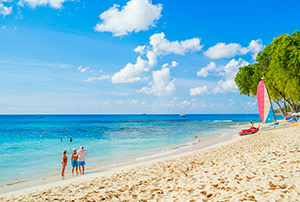
And while property prices in Spain and Miami bottomed a while ago, the Caribbean is yet to see the same scale of reversal. With the US economy on the up, that puts Barbados in prime position to benefit from social media millionaires needing holiday homes and resting breaks. (The fact that Barbados is considered one of the most wired countries in the world won’t hurt on that front either). The tech libertarian streak will probably also appreciate the island’s tax efficiency.
For me, it would be a place to write books. If that fails, it is a prime candidate for benefiting from the Airbnb-ifcation of the world.
…

John Thornhill, FT deputy editor
When I was studying Russian in Saint Petersburg in the early 1990s, my landlady offered me the chance to buy a ramshackle apartment on a canal near the Mariinsky Theatre for the equivalent of £30,000. I’m not sure how I would ever have financed my purchase, but I have regretted my lack of financial imagination ever since. The apartment is now worth, I guess, at least 10 times as much.
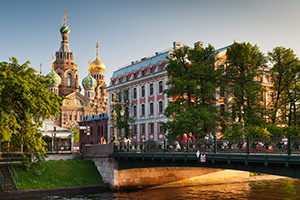
Gifted £1m, I would have great pleasure rectifying my mistake and living on a more luxurious scale. An atmospheric apartment overlooking the Fontanka river would do. Saint Petersburg is one of my favourite cities, stuffed full of culture, history and raw life, yet it is younger than New York. Russia’s imperial capital is the city of Pushkin, Dostoevsky, Akhmatova, and Tchaikovsky. It is also the home of the Hermitage and Russian museums and the Mariinsky, with its incomparable opera and ballet companies. There are few cities more magical than Saint Petersburg during the “White Nights” when night barely falls. At a time when we are daily seeing the more brutal aspects of Russian aggression in Ukraine, it would be good to be reminded of the country’s cultural glories too.
…

David Pilling, FT Asia bureau chief
I own a house in Acton, an unremarkable London suburb, bought in 1997 for £200,000. So far-fetched have London’s property prices become that I wouldn’t get much change from £1m if I bought the same house all over again. Has asset inflation worked such villainy that Acton now counts as a dream location?
One alternative would be a brand new apartment in Tokyo, where prices are edging up for the first time in 20 years. I’d pick Kagurazaka, a district with exquisite French and Japanese restaurants where you can still catch sight of geisha vanishing down the narrow alleyways. The apartment would look out on a temple courtyard and have a Japanese bathroom fitted with deep tub and space-age toilet.
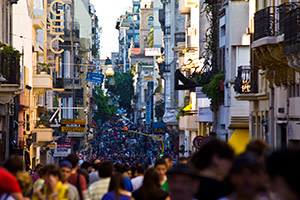
Yet, if pushed, I’d abandon Kagurazaka for San Telmo, the tango district of Buenos Aires where I once lived (while an FT stringer) on the corner of Caseros and Defensa. It had three bedrooms and with ceilings unreachable by step ladder. The lift doors were wrought iron. The hallway had Spanish tiles. The large living room, connected by French doors to an equally spacious dining area, had polished wooden floorboards. On the wall was a disconcertingly large painting of a nun wearing heavy boots. The long sofa was blood-red. There was a tropical plant coiled around a rope that wound its way to the ceiling. It produced flowers so large you imagined they might nip your finger off. The apartment overlooked a park. Outside were tango bars and coffee houses. I reckon I could buy two of those apartments for my £1m. In my memory, it’s better than Acton.
…

Philip Stephens, FT chief political commentator
Dry-stone walled, rough-thatched, and cutting a swath through the bracken and gorse, my new home glances down at the narrow Pollagh river as it meanders towards the Moy and gazes up through the mist towards the peak of Sliabh Cairn. County Mayo in the west of Ireland is a place of desolate beauty, of peat bogs, mountains, fog and, yes, rain. Tourists head for the prettified Atlantic coast and stare at the expensive yachts in Westport harbour. Those in the know enjoy rural Mayo as nature intended.
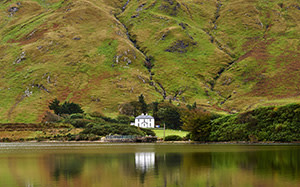
My imagined house sits on the edge of Kiltimagh (Coillte Mach), the place of my mother’s birth and where, as a child, I spent countless glorious summers. In the eyes of Dublin sophisticates, this makes me a “Culchie” (Coillte). Kiltimagh gave Ireland the disparaging term for someone struggling to comb the hay from his hair. I have been called worse.
The house is vast, a permanent retreat for the scattered diaspora of Martins and Costellos. In the stone-floored sitting room stands a peat-burning range, its blackened pots simmering with boiled ham and starchy potatoes. There are occasional touches of luxury: the bathrooms are inside and there is central heating upstairs.
The house, of course, would not cost £1m. Nothing like it. But I would use the change to buy and reinstate the town’s Savoy cinema: a place of fond memories.
…

Merryn Somerset Webb, Editor-in-chief of MoneyWeek
Blackpool in northwest England offers some of the lowest prices and highest rental yields in the country. And you might soon get even more. Energy firm Cuadrilla has submitted applications to drill fracking exploration sites near the seaside town. This may bring consultants, engineers, lobby groups, middle managers and community leaders into the area.
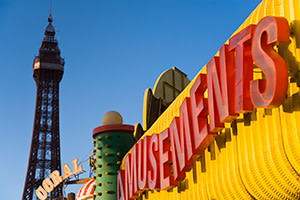
So I would invest my £1m in the perfect home for a senior energy executive. I might even chuck in an extra £250,000 right now to buy “Delwood”, a high-end house with a helipad. Energy people like those. Otherwise, I’d be tempted by the Stretton Hotel on the Promenade – yours today for £800,000, a sum you’d make back in six months if you did a bit of a refurb and all your guests were paying with company Amex cards.
…

Kate Allen, FT property correspondent
A pied-à-terre in an old building overlooking the Vieux Port in Marseille to use for weekend getaways. I love the city’s blend of Mediterranean sunshine and working-class port.
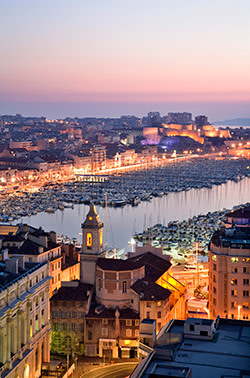
I would spend my time pottering around the steeply sloping streets of the old pirate quarter, sipping Provencal rosé and dancing till dawn in the city’s grungy bars and clubs. I would also take time to admire Le Corbusier’s classic Cité Radieuse housing development, an inspiration for Brutalism.
One-bedroom loft apartments with airy, high ceilings overlooking the old port can be bought for about €700,000 (£560,000). With the rest of the money, I’d buy a sailboat and a mooring. Then I could visit the sun-kissed towns and vineyards scattered along the coast at my leisure.
Photographs: Getty; 4Corners Images; Andrea Pistolesi; Walter Bibikow; Peter Adams / AWL Images
Comments